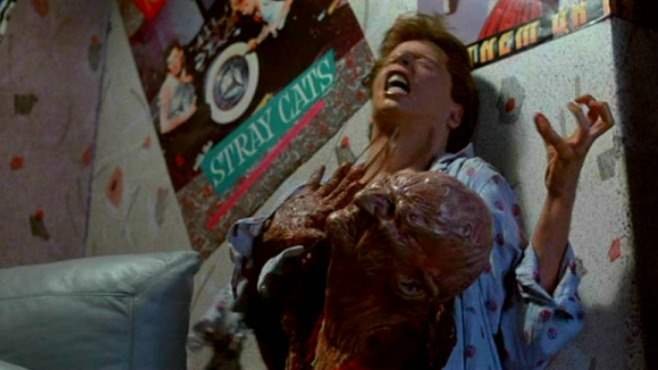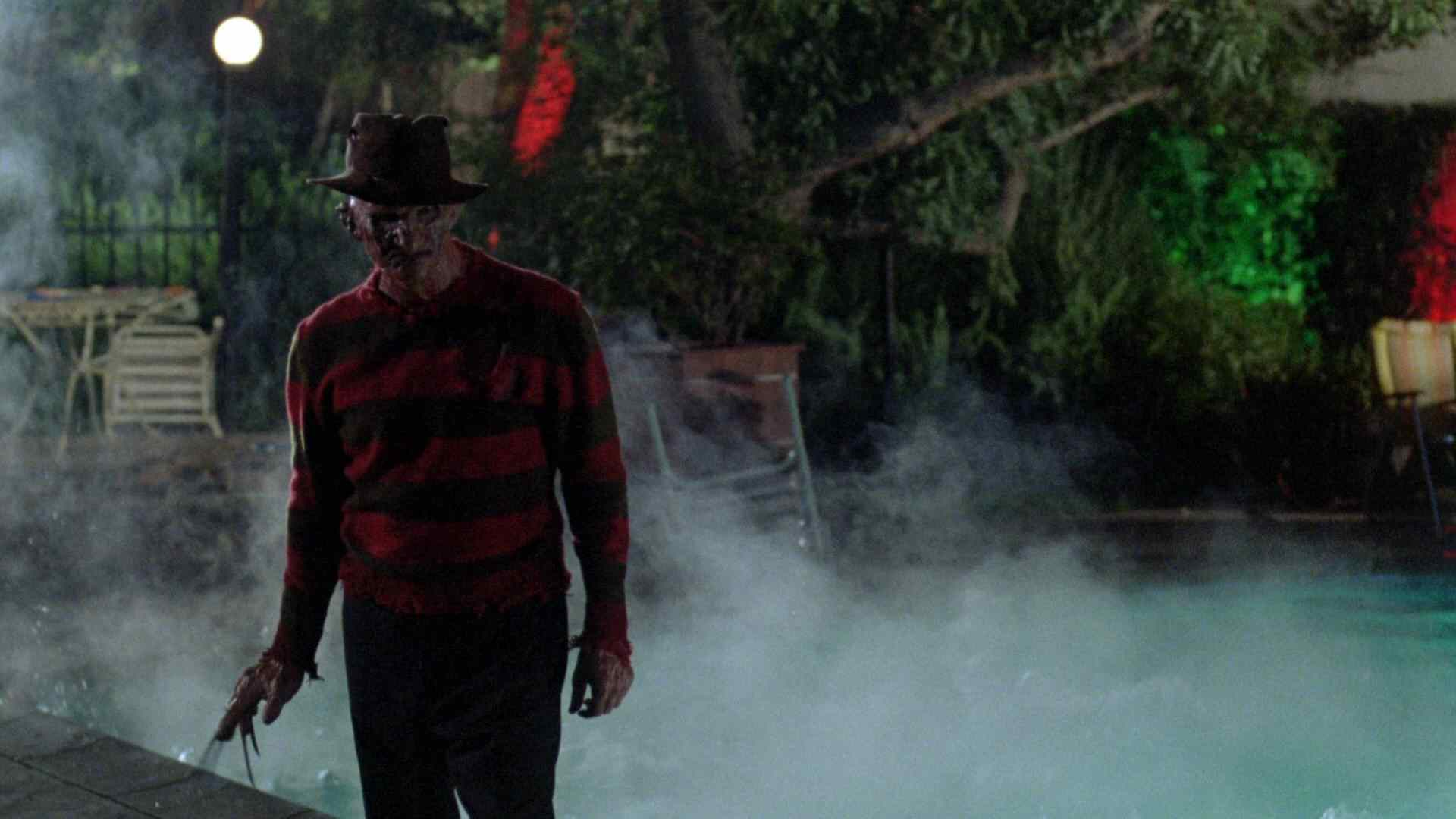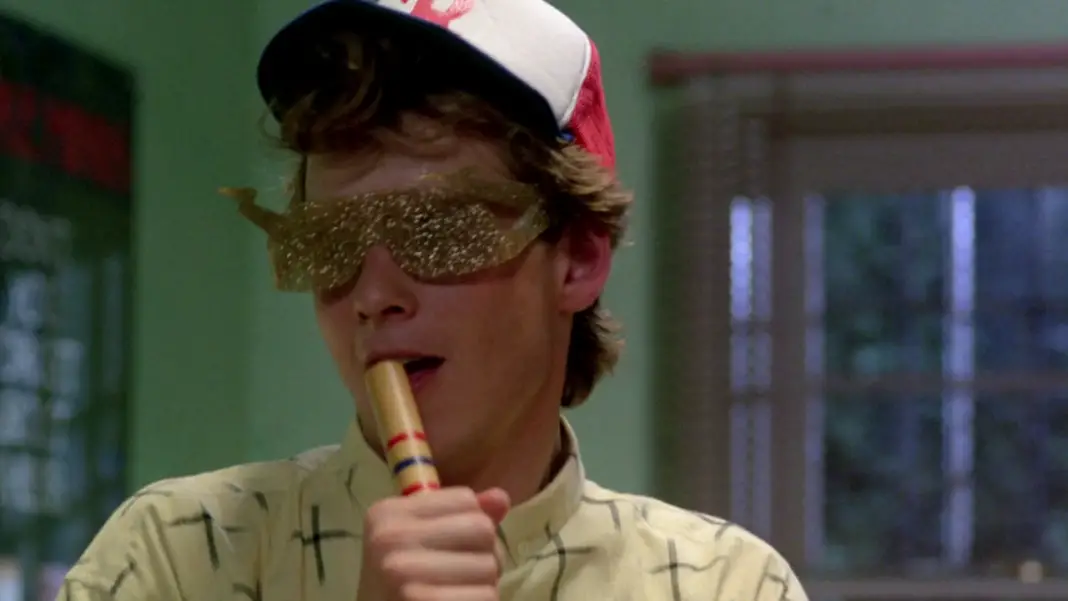A Nightmare on Elm Street was not a movie that anyone expected to become a big hi. Even after it was released, it wasn’t a huge success. It wasn’t released in enough theaters to be a true blockbuster. By the time a sequel was being considered, word of mouth surrounding the original was still building. People were just becoming aware of who Freddy was.
While A Nightmare on Elm Street 2: Freddy’s Revenge may be among the most maligned entry in the series—if not the most—fans are too quick to dismiss the fact that this film did a lot to put Freddy on the map. Much of it had to do with a wider release strategy and the marketing, but the sequel helped to cement the image of Freddy Krueger in the pop culture climate of the time.

I think most of the expectations that fans now have going into Freddy’s Revenge are sort of retroactive. We expect a strict continuity, we expect Nancy, because Dream Warriors went above and beyond to give us those things. It’s hard to think of an individual sequel without thinking of the franchise at large, and that’s where this one suffers in a way that’s not entirely the fault of the movie or the filmmakers.
 I actually like sequels that do something different and take an unexpected direction. Because the first is such an iconic, near-perfect horror movie, I don’t think aping it was the right thing to do. Borrowing the formula of the original would have seemed like repetition and it would not have worked the same way that it had worked for Friday the 13th Part 2. It would have been a mistake to try and copy the original, so director Jack Sholder and screenwriter David Chaskin decided on a sort of possession story instead.
I actually like sequels that do something different and take an unexpected direction. Because the first is such an iconic, near-perfect horror movie, I don’t think aping it was the right thing to do. Borrowing the formula of the original would have seemed like repetition and it would not have worked the same way that it had worked for Friday the 13th Part 2. It would have been a mistake to try and copy the original, so director Jack Sholder and screenwriter David Chaskin decided on a sort of possession story instead.
Eventually, Freddy’s Revenge would gain an audience for its differences, but not the ones that were intentional—at least, not in any way that was admitted to for nearly thirty years. In addition to taking a new narrative direction, Freddy’s Revenge is also chock-full of homoerotic subtext. It’s so full of said subtext that it’s hard to argue that any of it is unintentional. But that’s what the filmmakers did for years.
As time went on, people began to pick up on things in the story. They noticed the chemistry between lead character Jesse and his best friend Grady, chemistry that while not necessarily stronger was often more passionate than the relationship between Jesse and his girlfriend, Lisa. People noticed the way Jesse would talk about Freddy’s possession as “someone is trying to get inside my body.”
 There’s an overtly sexual nature to the film. There always is when Freddy’s involved, I think. Here, Jesse is made to sleepwalk to a local S&M club where he can be picked up by the predatorial gym coach to provide Freddy with a new victim. Analysis of the picture in the years since release has suggested that Freddy represents Jesse’s primal, repressed sexual urges and that to defeat Freddy he has to more or less come to terms with his own sexuality.
There’s an overtly sexual nature to the film. There always is when Freddy’s involved, I think. Here, Jesse is made to sleepwalk to a local S&M club where he can be picked up by the predatorial gym coach to provide Freddy with a new victim. Analysis of the picture in the years since release has suggested that Freddy represents Jesse’s primal, repressed sexual urges and that to defeat Freddy he has to more or less come to terms with his own sexuality.
I think there’s a lot of truth to this argument. It doesn’t necessarily sound like a positive take, right off the bat, but I think it’s a much more positive take on Jesse coming to terms with his sexuality if you look at it in a different way. If the homoeroticism isn’t subtextual, the movie becomes more interesting. I think much of it is right on the surface. In that respect, Jesse allows us, as the audience, to get a clear picture of what Freddy really is and always has been: A rapist.
Now, I’m not even talking about whether or not Freddy actually molested children, that’s a totally separate argument. But what Freddy is doing, invading dreams and the consciousness of his teenage victims, is a form of rape. He’s in your private thoughts, he’s exploiting everything you keep hidden and turning it against you. Of course sexuality would factor into that. People might complain that this is too different from other Elm Street entries, but everything happening in it is classic Freddy.

Looking at it this way, with Jesse and Freddy as clearly separate entities, Jesse is looking at Freddy as an ugly mirror—there’s literally a scene where Jesse looks into a mirror and sees Freddy—of predatory sexuality. Freddy is trying to make Jesse feel like a monster, embodied by Jesse’s guilt over the crimes Freddy has committed using his body, and in this case the end doesn’t represent Jesse conquering any sides of himself but instead coming to terms with his lot in life and accepting himself.
There are a lot of different ways to read Freddy’s Revenge, which is only one reason why the film is more interesting than it gets credit for from the hardcore fanbase. It’s been embraced outside the fandom, though, by the LGBT community, but even that is a recent development. There are a lot of reasons for this. One such reason is the boom of horror conventions over the past decade that allowed fans to not only congregate and share these interests, but share them with the cast and filmmakers. Another reason could be the advent of DVD and Blu-ray and the film’s presence on Netflix, which made it available to a whole new audience. There was a Cracked article that named Freddy’s Revenge the most unintentionally gay horror movie ever made. And then there was the Never Sleep Again documentary in which writer David Chaskin finally admitted—in a somewhat awkward way, when put on the spot—that the homoerotic under/overtones had been intentional after all.
It took A Nightmare on Elm Street 2 thirty-one years to come out of the closet, but it finally has and it deserves your support. It always has. Whether you’re interested in its high-concept themes or not, it’s a genuinely creepy flick in which Englund gives perhaps his scariest performance. Freddy’s Revenge may always be the outsider in its family, but it’s nonetheless one of the most interesting and lively entries; a pivotal LGBT horror flick that happens to be a great little FX-driven monster movie at the same time.






